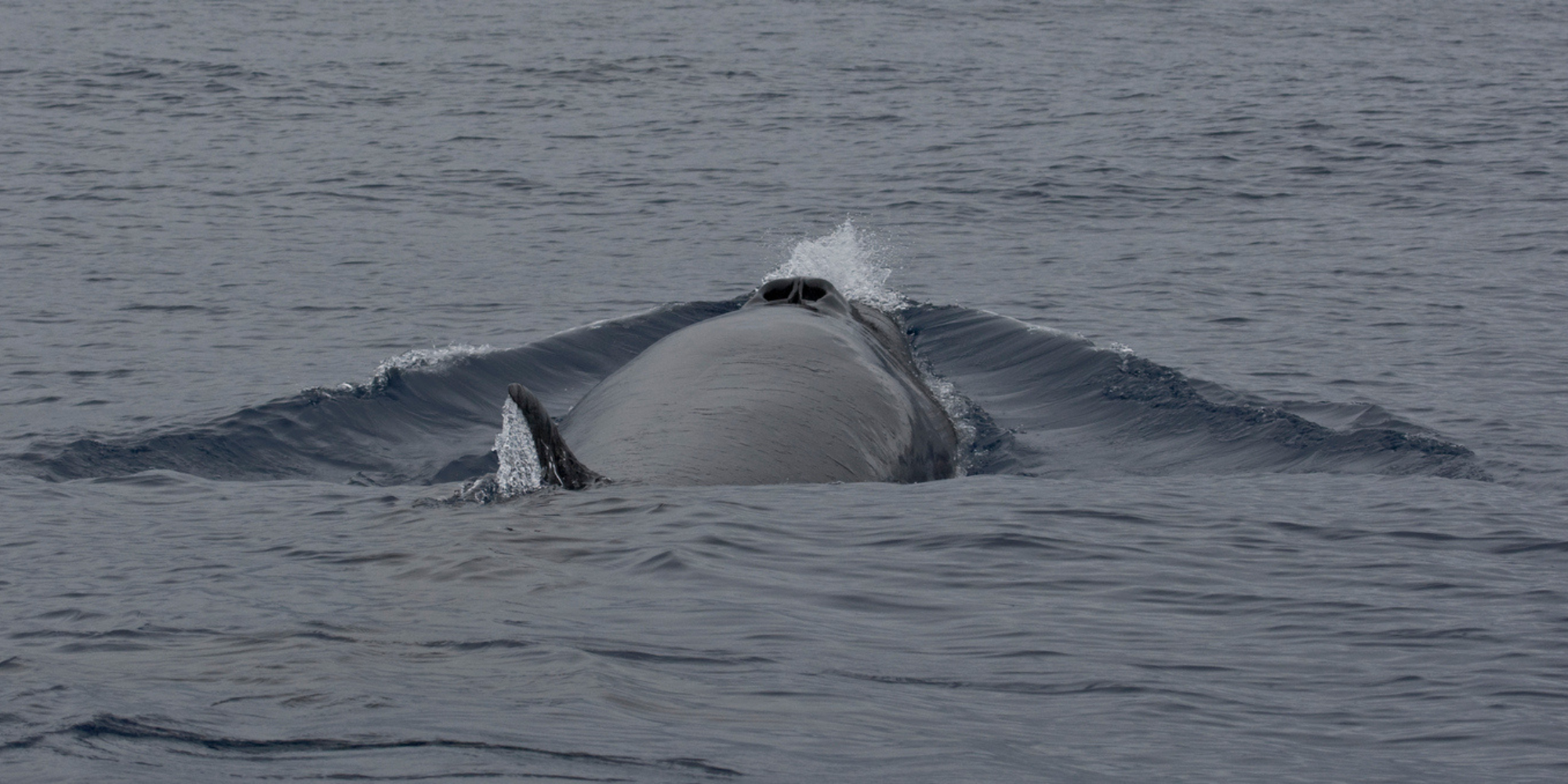The third largest whale species after blue whales and fin whales, sei whales are usually observed alone or in small groups.
There’s still a lot to be learnt about sei whales including their migration patterns, current distribution and their behaviour, as they haven’t been well studied over the years. This is partly due to the fact that they live primarily offshore.
The species can be found in subtropical, temperate and subpolar waters globally and are often found with pollock fish in Norway. This is how they get their name as ‘sei’ comes from the Norwegian word for pollock, ‘seje’.
Weighing in at 20 tons, sei whales measure around 13 to 20 metres in length.
They have a long and sleek body that’s bluish-grey to black in colour, with a white or cream colour on the underside. As it is a baleen whale, the species has baleen plates in their enormous mouths, which they filter their food through.
Sei whales are also recognisable by their tall, hooked dorsal fins and are sometimes covered in circular shaped scars (most likely caused by bites from cookie-cutter sharks and lampreys). They have a columnar blow that’s about three metres high.
Sei whales glide through the water and are fast swimmers (reaching speeds of up to 50 kilometres an hour). They don’t dive the same way that we see other whales diving below the surface (arching their back and showing their flukes before submerging). Instead, the sei whale simply sinks below the water’s surface.
They rarely show their flukes above water but leave ‘fluke prints’ on the surface of the water during shorter dives, and this is something that researchers watch out for when following sei whales.
Sei whales are known to be quite playful at times and have been observed breaching. They are quite solitary or prefer smaller groups but these groups often increase in size when animals feed together.
Two sub-species of sei whale are recognised – B.b.schlegelli in the southern hemisphere and B.b.borealis in the northern hemisphere.
Where do sei whales live?
While they’re found in subtropical, temperate and subpolar waters around the world, sei whales generally prefer temperate waters in the mid-latitudes. This means they’re found more often in the Atlantic, Indian and Pacific Oceans.
The movement patterns of the species are not well documented but they’re typically found in deeper ocean waters, far from the coastline.
They usually feed in colder waters during summer and migrate to warmer waters in the winter but they don’t have stable migratory patterns compared to other baleen whales such as the humpback whale.

Population
Due to the fact that Bryde’s whales and sei whales have (and still continue) to get confused for each other, it has made it difficult to estimate population numbers.
The sei whale is listed on the IUCN Red List of Threatened Species as endangered but with a population that is increasing (estimated population of 50,000).
The global sei whale population was severely impacted by commercial whaling in the 19th and 20th centuries, with an estimated 300,000 individuals killed for their meat and oil. The species was heavily hunted in the 1950s and 1960s, when whalers turned their attention from the depleted blue whale and fin whale populations.
In 1986, the International Whaling Commission (IWC) officially halted all commercial whaling. However, since its withdrawal from the IWC in 2019, Japan kills an estimated 50 sei whales a year under what it calls its ‘scientific’ whaling programme.
What do they eat?
Sei whales usually skim feed – swimming close to the water’s surface with their mouths open and throat pleats extended so that they scoop up plenty of plankton. They then filter out the water through their baleen plates, leaving them with their tasty food.
They eat around 2,000 pounds of food a day, including fish, squid, krill and plankton. They are spotted occasionally diving down to find food, particularly squid which is found at deeper ocean levels.
Check out this video from Blue Planet of a sei whale feeding underwater:
Threats to sei whales
Vessel strikes
Sei whales are at risk of vessel strikes throughout their range but as they tend to populate deeper offshore waters, they tend not to be found in areas with busy ship traffic.
Environmental change and pollution
Sei whales, like other cetaceans, use noise to communicate and to locate prey. Increased noise pollution from vessels and other human activity interferes with this ability.
Climate change and pollution are a threat to all whales and dolphins because of the loss of habitat as waters become warmer.
Plastics and micro plastics, along with chemical pollutants, entering into the water system are a serious threat to all creatures in our ocean.
Entanglement in fishing gear
Like other cetaceans, sei whales can become entangled in fishing gear which goes on to cause injury, fatigue, comprised feeding and sometimes even death.
